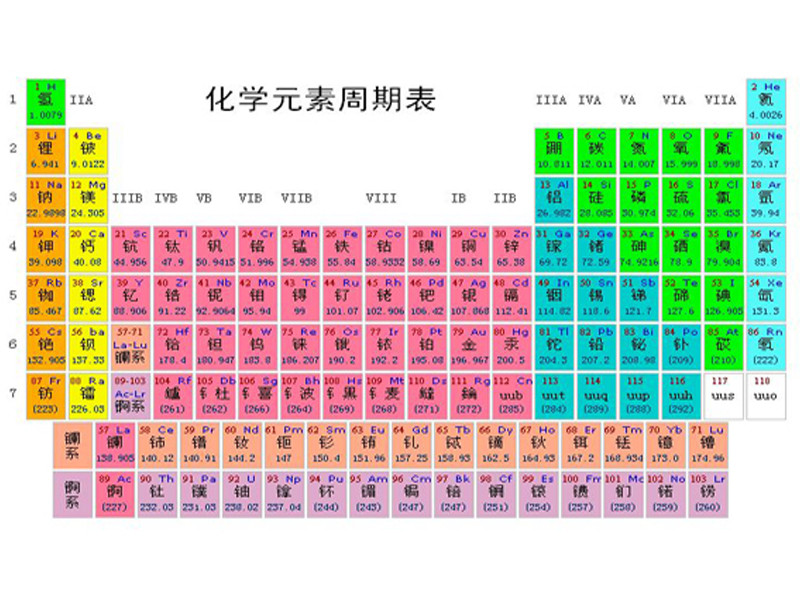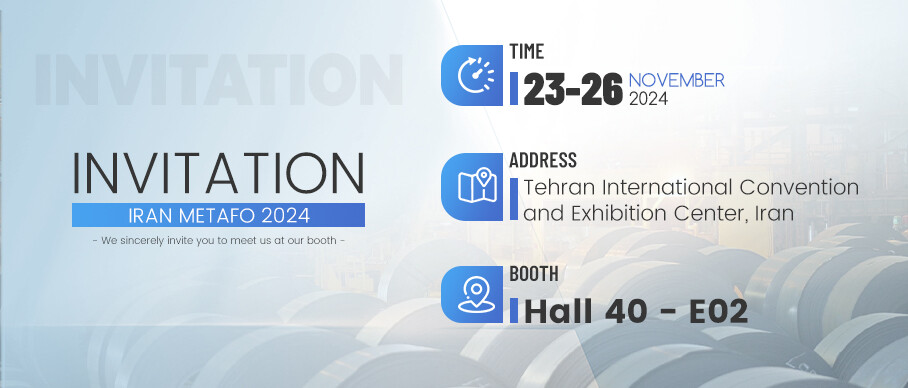
At present, there are more than 100 known chemical elements, and about 20 chemical elements can be encountered in steel materials commonly used in industry.
For people in a long struggle with the corrosion phenomenon formed by the practice of the special steel stainless steel series, the most commonly used element has a dozen, in addition to the basic elements in iron steel, with the largest elements affect on the performance of the stainless steel is: carbon, chromium, nickel, manganese, silicon and molybdenum, titanium, niobium, titanium, manganese, nitrogen, copper, cobalt, etc. In addition to carbon, silicon and nitrogen, these elements are transitional elements in the periodic table of chemical elements.
Effects of various elements on the properties and microstructure of stainless steel
1. The decisive role of chromium in stainless steel: the determination of stainless steel belongs to only one kind of elements, this is chromium, each stainless steel contains a certain amount of chromium. To date, there is no stainless steel without chromium. The reason why chromium has become the main element to determine the performance of stainless steel, the fundamental reason is to add chromium to steel as an alloying element, promote its internal contradictory movement to the development of resistance to corrosion damage. This change can be explained from the following aspects: ① chromium increases the electrode potential of iron-based solid solution; ② Chromium absorbs the electrons of iron and passivates iron. Passivation is the phenomenon that corrosion resistance of metals and alloys is improved because the anodic reaction is prevented. There are many theories of metal and alloy passivation, mainly thin film theory, adsorption theory and electron arrangement theory.
2. The role of nickel in stainless steel is in coordination with chromium nickel is excellent corrosion resistant material, but also an important alloying element of alloy steel.
Nickel is an element of austenite formation in steel, but the nickel content of low carbon nickel steel should reach 24% to obtain pure austenite structure. However, the corrosion resistance of the steel in some media can be significantly changed only when the nickel content is 27%. So nickel alone cannot form stainless steel. But when nickel and chromium exist in stainless steel at the same time, the stainless steel containing nickel has many valuable properties. Based on the above situation, the role of nickel as an alloying element in stainless steel is that it makes the structure of high chromium steel change, so that the corrosion resistance and process performance of stainless steel to obtain some improvement.
3. Manganese and nickel chrome nickel in the process of the nitrogen can replace chromium nickel stainless steel austenitic steel advantage although a lot of, but in recent decades because of nickel-base heat resistant alloy and nickel of less than 20% of the heat intensity development and application of steel, and the growing development of chemical industry of growing demand for stainless steel, nickel and mineral deposits is less and concentrated distribution in minority areas, Therefore, there is a contradiction between the supply and demand of nickel in the world. So in the field of stainless steel and many other alloys, such as large castings and forgings with steel, tool steel, refractory steel, etc.), especially the relative lack of resources of the country, nickel widely carried out section nickel and nickel with other element generation of scientific research and production practice, in this aspect research and application of more on manganese and nitrogen instead of nickel in stainless steel and heat resistant steel.
4. The application is more manganese and nitrogen to replace the nickel in stainless steel and heat resistant steel.
Manganese plays little role in improving the corrosion resistance of steel. For example, when the manganese content of steel changes from 0 to 10.4%, the corrosion resistance of steel in air and acid does not change significantly. This is because manganese has little effect on improving the electrode potential of iron-based solid solution, and the protective effect of the oxide film formed is also very low. Therefore, although there are austenitic steel alloyed with manganese in industry (such as 40Mn18Cr4,50Mn18Cr4WN, ZGMn13 steel, etc.), they can not be used as stainless steel.
The effect of manganese in stabilizing austenite in steel is about half that of nickel, that is, the effect of 2% nitrogen in steel is also stabilizing austenite, and the effect is greater than nickel. For example, in order to obtain austenitic structure of 18% chromium-containing steel at room temperature, low nickel stainless steel with manganese and nitrogen instead of nickel and chromium-manganese nitrogen without inducing steel with primary nickel have been applied in industry, and some have successfully replaced the classic 18-8 chromium-nickel stainless steel.
4 stainless steel titanium or niobium is to prevent intergranular corrosion.
5. Molybdenum and copper can improve the corrosion resistance of some stainless steels.
6. The effect of other elements on the properties and microstructure of stainless steel
The above nine main elements on the performance and organization of stainless steel, in addition to these elements on the performance and organization of stainless steel elements, stainless steel also contains some other elements. Some are common impurity elements like steel, such as silicon, sulfur, phosphorus and so on. Some are also added for some specific purposes, such as cobalt, boron, selenium, rare earth elements, etc. From the corrosion resistance of stainless steel this main property, these elements relative to the nine elements discussed, are not the main aspect, although this, but also can not be completely ignored, because they also affect the performance and organization of stainless steel.
Get product information and quotes


